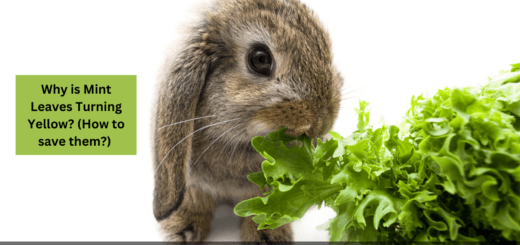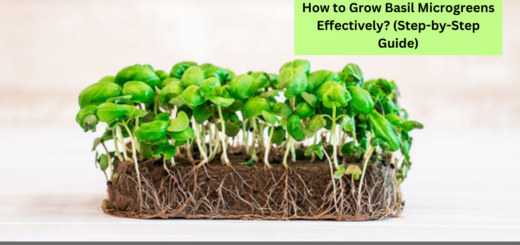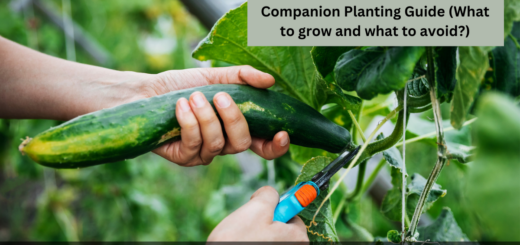15+ Common Basil Problems (How to fix them?)
If you’re a basil lover and enjoy growing them in your garden, it’s essential to be aware of the common problems that can arise during the growth process. Understanding these issues will help you ensure that your basil thrives.
Don’t worry if you’re not familiar with these problems, because I’m here to share all my research with you.
You might wonder why I’m doing this. Well, even though basil plants may appear to be growing normally, they can still encounter problems. That’s why it’s crucial to be informed about potential issues. So, without further ado, let’s explore some common basil problems.
Key takeaways:
- The basil plants have yummy aromatic leaves that make a great pesto sauce.
- They are stars of our kitchen and pests and many diseases easily attack the leaves.
- Many times the basil plants are growing in the normal way but might have a problem, so it is important to know all of these.
We have included almost all of the problems related to the basil plants and you will find the information grasping one ad easy yet effective.
Some Common Basil Problems
The basil problems include diseases, pest attacks, or nutrient deficiency. The issues that basil plants usually face are:-
1. Plant getting skinny and stunted
Reasons:
Giving too much fertilizer:
Excess of everything is bad, too much fertilizer harms the basil plants, especially the leaves, as the flavors start to fade away or leaves get less flavourful. The fertilizers will make the basil plant grow fast but not all the time. The plant will show the reverse trait and get leggy.
Temperature dropping
Basil prefers heat and a good amount f sunlight. The basil being exposed to low, practice can get leggy and growth gets stunted. They are sensitive to sudden temperature drops as well.
Getting less sunlight
Basil plants should get at least 6-8 hours of full sun to thrive well and stay bushy. The basil plants if not getting enough mean the warm conditions are less and they will gain and get stunted.
Poor drainage
The soil should be moist for basil plants to grow but not soggy and drained in water, the soil if has poor drainage or is too clayey then the basil plants are likely to get leggy
Overwatering
Over-watering the basil plants can create problems for the basil plants. They need water but not too much if the soil is still moist.
Irregular pruning
Pruning makes the basil plants bushier, if you are not pruning the basil plants lightly every other day, they will get weak and slow down their growth. The tips need to be pruned and pinched s that they dont get leggy.
How to fix it?
Follow the instructions for fertilizing as per the package. Plant them in a sunny spot and make sure the soil is well-drained. Do regular pruning and plant only after the last frost.
2. Discoloration of leaves
Lack of nutrients
The basil plants not getting a good amount of nutrients can lead to the yellowing of leaves, other than this leaves also get weirdly shaped if there is not enough nitrogen present in the soil for them.
Fungal attack
The discoloration of leaves is also related to the fungal infection around the root due to water standing for a long. The lower leaves of the basil plants are getting yellow like spider plants then they might have been attacked by the fungus.
Watering issue
The yellowing of leaves is often seen if you are not adequately watering the basil plants, the plants
Nematodes
Nematodes are stubborn pests and might kill your plants when they have completely taken over the basil plants, the yellowing of leaves can also be due to an attack f these nematodes that suck the juice out of them.
How to fix it?
Dont overwater the basil plants, leave a gap between the watering days. Dont let the water stay long in the soil and around the roots. Check the soil if it is drained well. The soil if dry then should be watered.
3. Spots on the body
The black spots and brown spots start to appear on the basil leaves due o the frost, fungal infection, or nutrient deficiencies. The problem needs to be corrected as soon as possible otherwise the spots will make the whole leaf black colored which is not edible
How to fix it?
The late summer season is when you should plant basil and move the plants indoors when outdoor conditions are not suitable. Provide the plants with enough sunlight and air.
4. Twisting of leaves
The leaves of the basil plant will start to twist if not get a good amount of water and sunlight. Often, pests like aphids and mites suck the useful sap from the plants, making the leaves lose energy and curl. You need to get rid of spider mites on basil.
How to fix it?
The basil plants should get 5-6 hours of sunlight in a day. Other than this, water the plants and dont let the soil get dry, keep it moist,t and regularly water the plant in the early stages. Use insecticidal spray or neem oil to avoid pests.
5. The bitter taste of basil
Basil plants grow quite rapidly, the old leaves need to be pruned down so the site should be cut off a little every two weeks so that the fresh leaves can be grown, otherwise, the leaves get bitter and don’t taste that qualitative.
How to fix :
The plant needs to be provided regularly lightly or every two weeks. Fertilize the soil, and provide good sunlight and water. You can collect and dry the basil leaves and use them later anytime you want.
To know more about the plant world, you may also read related articles, Basil Leaves Turning Yellow (5+ Causes and fixes for them)
6. Root rot
The main reason for the root rot in the plants is overrated soil that is not properly drained or has poor drainage. The water ultimately destroys the root, creating rotting conditions there.
How to fix:
The damaged roots need to be cut off and replanting to the safe pot with a drainage hole should be done. Use drip irrigation than watering too much. Water one time a week. If the basil plant is growing, water regularly with a sprinkled can or spray.
7. Mildew disease
The downy mildew disease makes the basil plant leaves turn lifeless and yellow. Many times, the green basil leaves turn to a brown color as well as the mint plant turns brown.
How to fix it:
The mildew disease is not easily cured. Dispose of the plant or destroy using a new plant with good resistivity.
8. Fusarium wilt
The Fusarium wilt is another disease that causes the leaves of the basil plant to wilt and use the color to yellow. The strips also start to appear on the stem region.
How to fix:
Buy a new basil plant.
9. Bacterial leaf spot disease
The disease is caused by Pseudomonas cichorii. The brown spots looking like rings with white mid-portion start to appear on the basil leaves.
If the soil is unhygienic and infected, there is a high chance the basil plant will get bacterial spot disease.
How to fix:
Clean the soil from dead decomposed leaves and infected plant parts.
10. Aphids
Aphids are the most common pests that attack basil plants. The aphids suck the basil plant juice and obviously will make them weak and unhealthy to be eaten.
How to fix:
Using hydrogen peroxide spray, doing companion plantain, and using diatomaceous earth on the plants are some of the ways to get rid of aphids and flies
11. Root-knot nematodes
root-knot nematodes, affect the roots of basil plants by creating their knots of them.
How to fix it:
Basil plants will die and can not be recovered from the damage.
12. Flea beetles
The flea beetles feast on the basil leaves and create too many holes in them, making them unfavorable for eating purposes.
How to fix:
Using diatomaceous earth and row covers can help the basil plants from these pests.
13. Snails and slugs
The slugs again make ha ole on the leaves of basil plants. They also lay eggs making the powdery appearance of the leaves too. The snails and slugs can attack the basil leaves anytime.
How to fix it:
Remove them manually and throw them far away from the basil plants.
14. Nitrogen deficiency
Nutrient deficiency like nitrogen can cause some trouble for the basil plants. As mentioned above, the yellowing of leaves will occur, and the stunted growth of basil plants is seen.
How to fix:
Use organic and nitrogen-rich fertilizer
15. Phosphorus deficiency
The purple spots on basil leaves are an indication that they are getting phosphorus-deficient
How to fix it:
Use organic and phosphorus-rich fertilizer
16. Potassium deficiency
The brown spots on the basil leaves and the borders of the leaves turning yellow or brown are indicators of potassium-deficient basil plants.
How to fix:
Use organic and potassium-rich fertilizer


